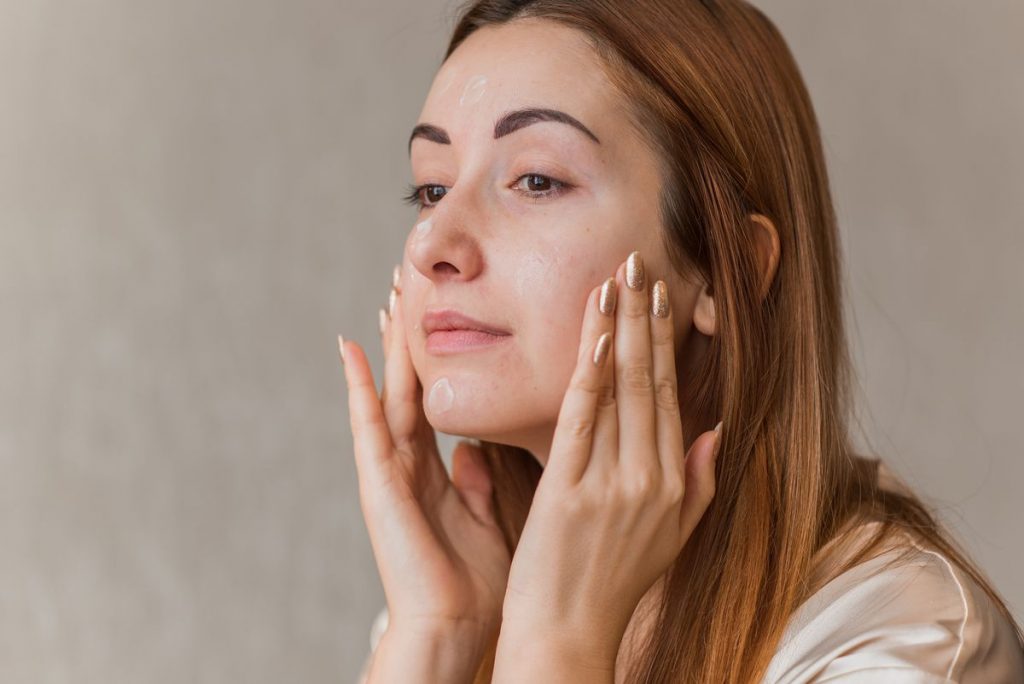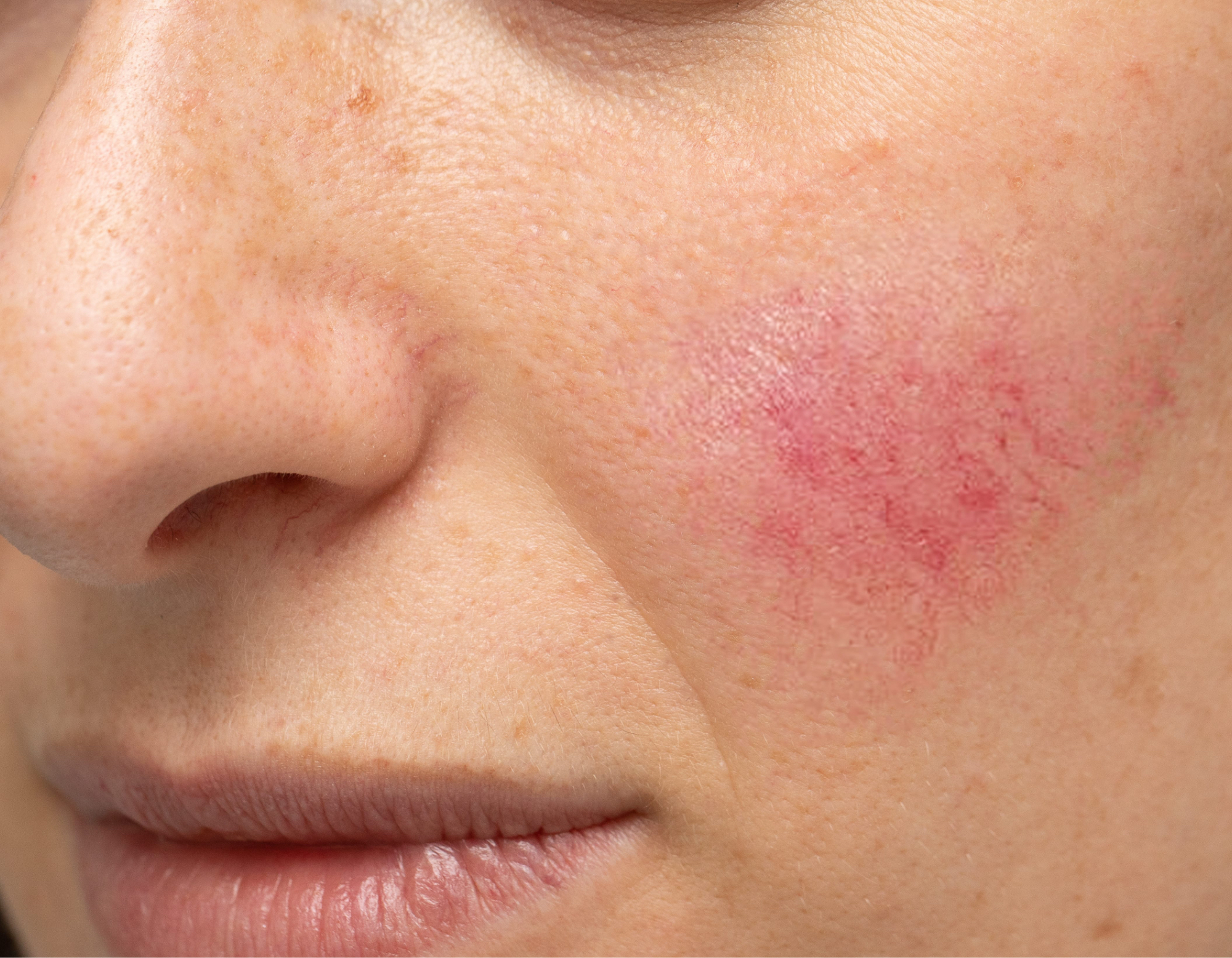What Is Rosacea?
Rosacea is a common but poorly understood disorder that causes red marks to appear on the body, primarily the face. It affects approximately 14 million Americans and is most frequently seen in women, but can also affect men in a more severe form. This problem runs in the family and most often affects people of European descent. It appears in adult life in the late 30s to early 40s and is often characterized initially by facial flushing with persistent redness. Later, inflamed papules and pustules can appear usually on the cheek and nose.

Causes of Rosacea
The causes of rosacea have been poorly understood. However, recently a number of new developments are helping us understand the pathophysiology of this condition. This disorder has been characterized by an alteration of the immune system on the surface of the skin which results from an abnormality of a protein referred to as a cathelicidin peptide. Over-expression of this protein results in an inflammatory response that appears to lead to the characteristic features of rosacea, e.g., redness, papules, and dilated blood vessels.
The most well-known trigger of this condition is sunlight. The damage caused by UVB light results in overexpression of the cathelicidin peptide. When the barrier function of the skin is disrupted by wind, extremes in temperature, or by vigorous bathing, there is an exacerbation of the factors that lead to this problem. Chronic inflammation in this condition eventually leads to repeated vascular damage resulting in dilatation and eventually persistence of enlarged blood vessels, often referred to as facial telangiectasia.
Non-soap Cleansers
First and foremost, special care must be paid to the altar skin barrier function which can be repaired by close attention to gentle cleansing with non-soap cleansers and the use of moisturizers which reestablish barrier function of the skin.*
Topical/Oral Treatments
There are topical and oral treatments for this condition; azelaic acid and metronizodol are important topical agents that have an antimicrobial and possibly anti-inflammatory mode of action.* Often they are sufficient to control the milder forms of this disorder.*
Laser Treatments
ICON laser treatments can help to reduce the signs of rosacea, and changes to your daily routine can prevent new flare-ups. ICON’s MaxG handpiece uses intense pulsed light (IPL) technology to minimize spider veins, vascular lesions, and redness. IPL systems transmit light energy. Light energy is easily absorbed into targeted cells in the skin. This light energy is converted to heat energy, which causes “damage” to specific target areas. This damage breaks up skin pigmentation and speeds up skin cell turnover.
Sunscreen
Concurrent use of sunscreens, especially during the sunny months of the year, can help eliminate the UV light trigger and preserve barrier function of the skin.*
Tetracycline Drugs
The tetracycline family of drugs also plays an important role. There is a low dose form of this drug known and approved as Oracea which acts primarily as an anti-inflammatory drug.* The side effects are minimal due to the low systemic doses required for activity. Higher dose tetracycline, Doxycycline and minocycline can be more useful in difficult cases.*
Therapies
Oxymetazoline and Brimonidine are two of the newest therapies used to address rosacea. Oxymetazoline is an FDA-approved therapeutic cream that has shown to be effective at reducing skin redness (erythema). Brimonidine is also FDA-approved and applied via a topical gel. As a result, you may see a reduction in erythema by constricting the dilated blood vessels to reduce the redness of rosacea.
Request an Appointment in Sacramento, CA
Dr. Tanghetti’s work has been published in journals such as Lasers in Surgery and Medicine, Journal of Dermatologic Surgery, the Journal of Cosmetic and Laser Therapy, and Cutis. He is a fellow of the American Society for Laser Medicine and Surgery, and a member of the California Medical Association, the American Medical Association, and the American Academy of Dermatology. For a consultation to discuss the rosacea treatments offered at our clinic, call us at [916] 454.5922 or complete the form below.
Schedule Online
"*" indicates required fields


